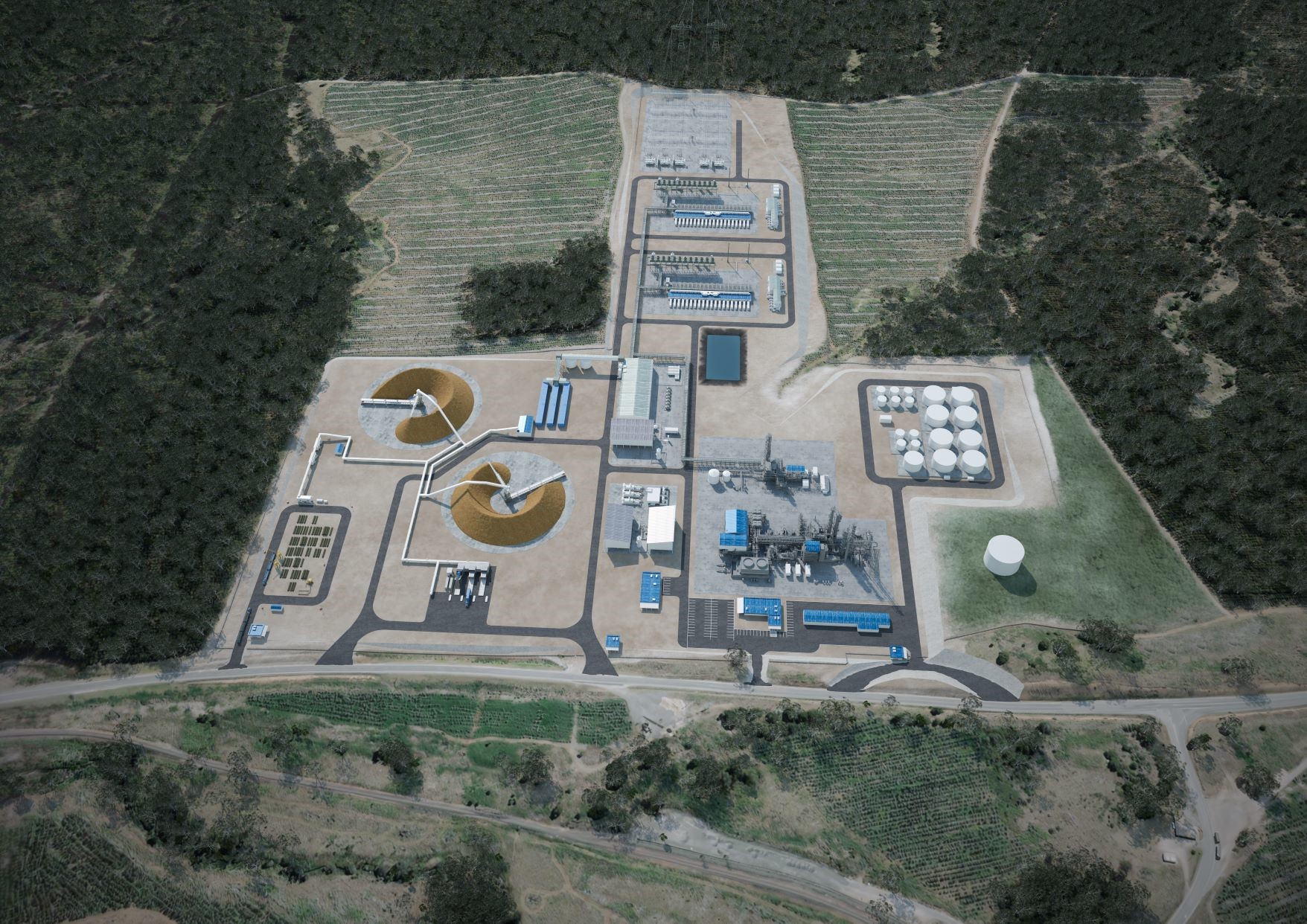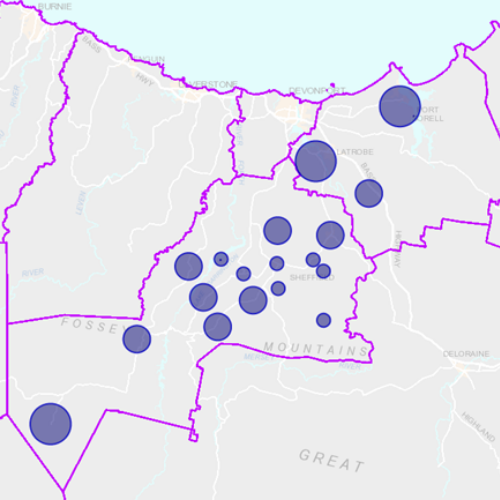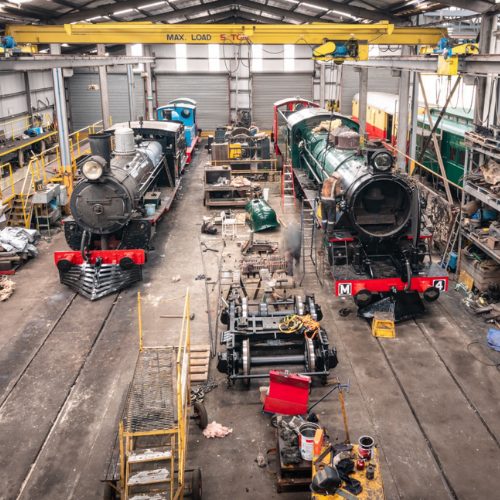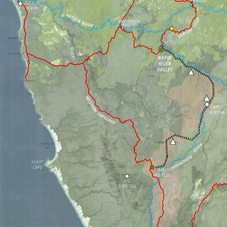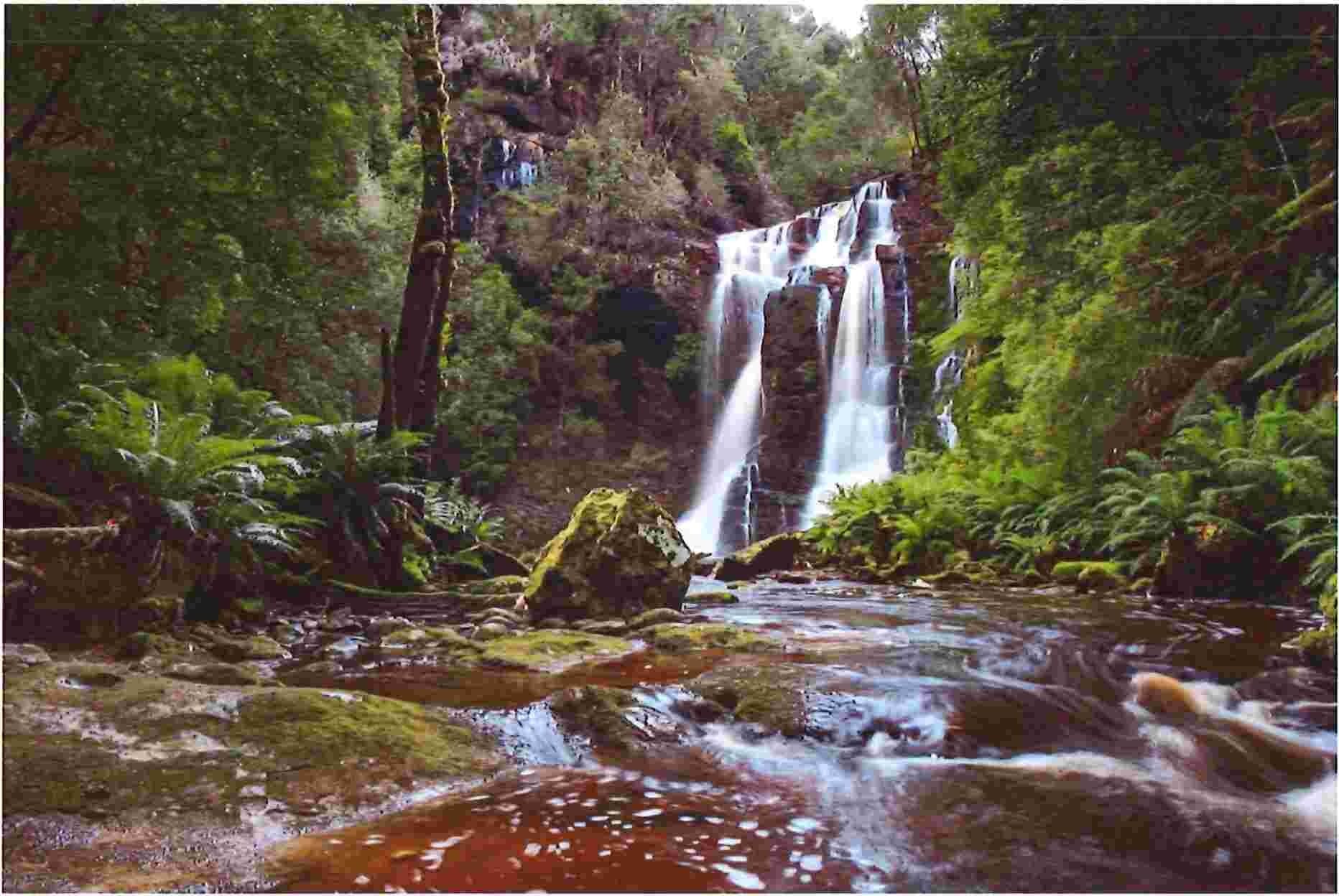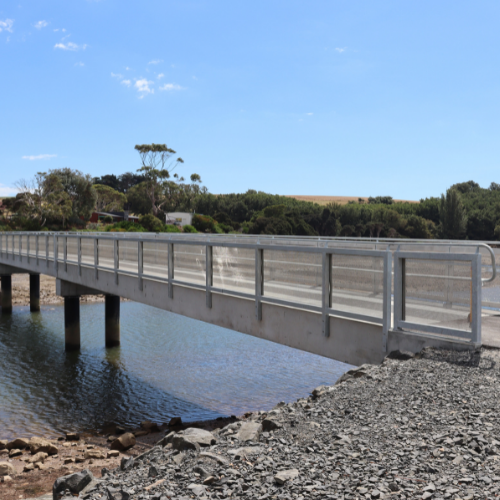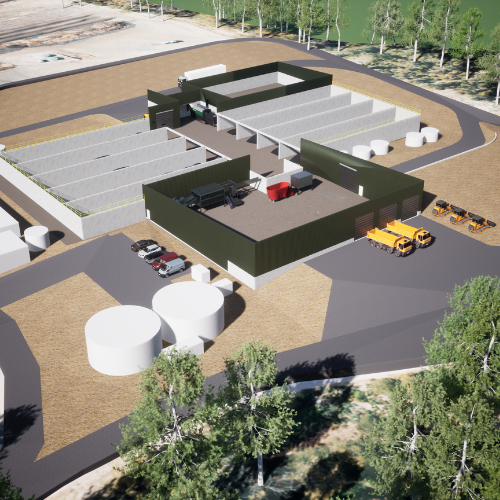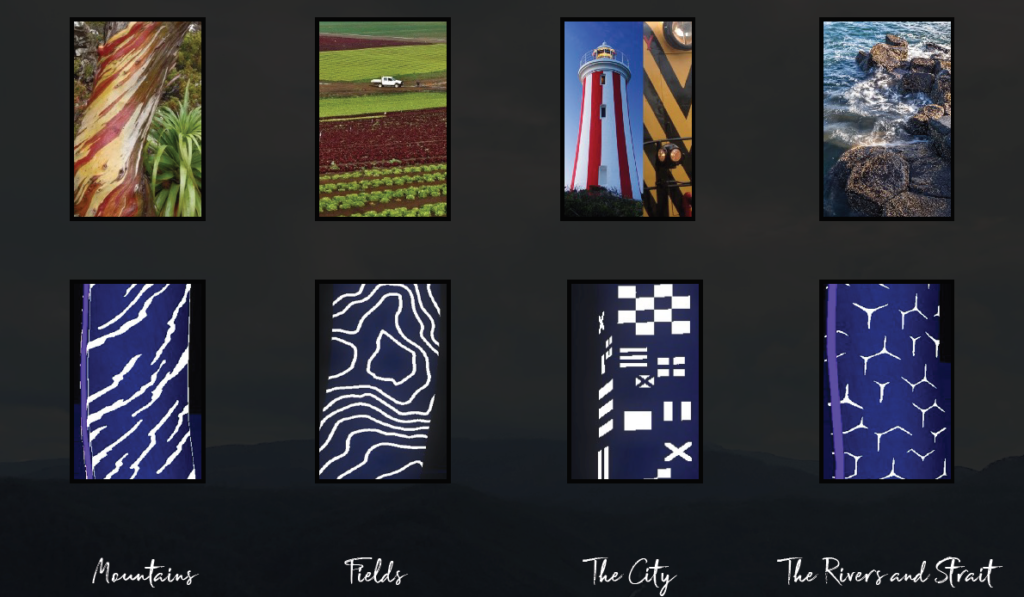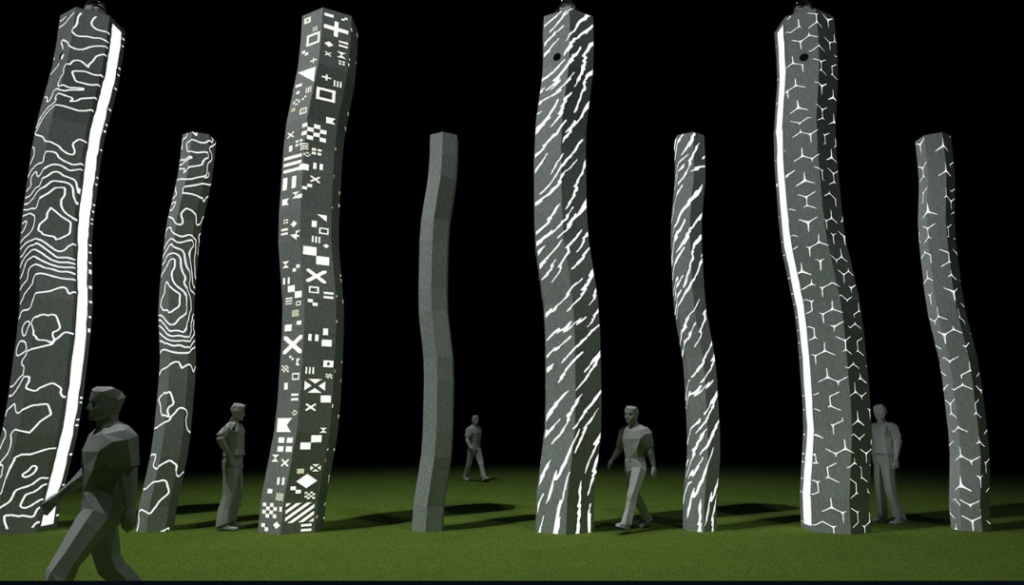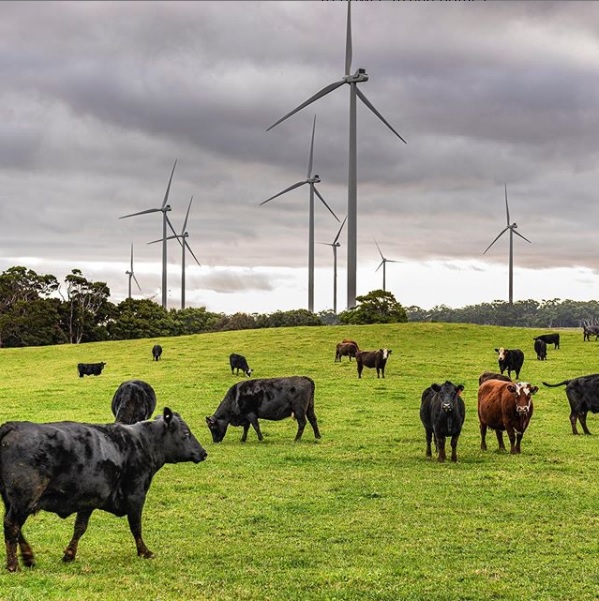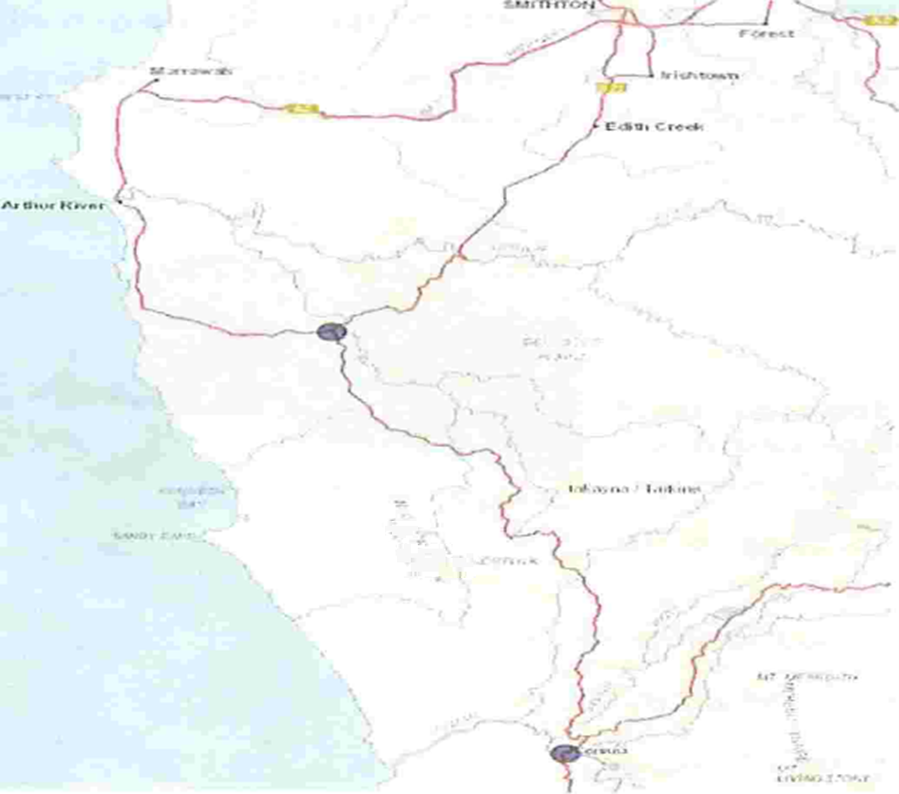REGIONALLY IMPORTANT PROJECTS
There are currently eight regional projects of importance that have been submitted and accepted by the Regional Economic Development Steering Group. Details on the projects are below. Detail on how to make a submission can be found here.
GREEN HYDROGEN IN THE NORTH WEST – WHALEBACK RIDGE
The West North-West region of Tasmania is incredibly well positioned to be amongst the first large-scale green hydrogen and green ammonia producers. With a deep-water port, world-class renewable energy resources, abundant water and plans already progressed for major transmission and hydro storage upgrades, there is no shortage of opportunity to grow the hydrogen industry in the region.
Westcoast Renewable Energy Pty Ltd has been developing a 3GW wind farm in the proposed North West Renewable Energy Zone (REZ) along with prospects for the potential of hydrogen production facilities on the West Coast, in Waratah and continued investigations throughout the North West. The Whaleback Ridge Wind Farm studies are well progressed with preparations underway to submit a Major Project Proposal for assessment and approval.
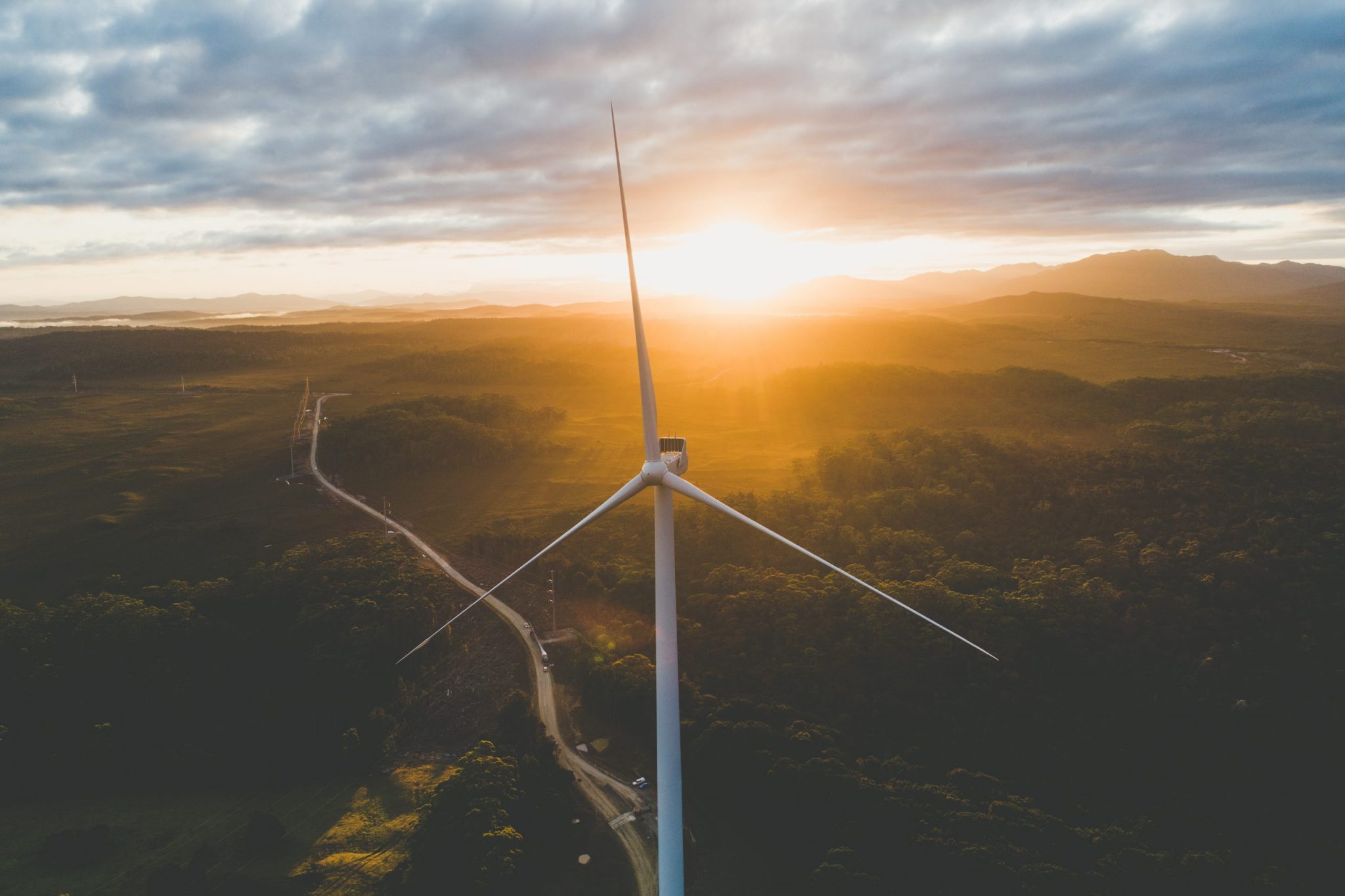
HIF TASMANIA EFUELS FACILITY
HIF Tasmania will be the first commercial scale eFuels facility to be built in Australia, harnessing the natural advantages of Tasmania to accelerate decarbonization. The facility will use renewable energy from the local grid to power electrolyzers to produce green hydrogen. CO2 captured from Tasmanian plantation biomass will be combined with hydrogen via synthesis. The resulting carbon neutral eFuels can be used in existing infrastructure.
HIF Tasmania is expected to produce approximately 20 million galons per year (~75 million liters per year) of carbon-neutral eFuels. It will be located on the Forico estate at Surrey Hills, 30km south of Burnie in North West Tasmania. Is expected to provide nearly 200 full-time permanent jobs during its anticipated 40-year of operating life.
The project is in the permitting and design phase.
SLIPSTREAM CIRCUS BUILDING
Slipstream Circus is Tasmania’s largest circus organisation, providing a safe professional environment for participants to develop a range of performance skills and perform locally. Participation in circus has shown to benefit academic and social development, and build confidence for future public life.
This project will:
- Build a fit for purpose, circus focused performing arts training space.
- Fill a current gap for community, professional and educational groups.
- Offer flexibility for use by many performing arts and community groups on the Northwest coast of Tasmania.
- Enable the Slipstream Circus to expand and diversify their offering.
- Free up space in their existing accommodation at the Ulverstone basketball stadium.
- Provide suitable access for people with disabilities and address current structural limitations.
A dedicated circus training and performance space will enable circus training to flourish and expand in scope for trainers and participants – including student members, schools, community groups, professional artists disability groups, disengaged at risk children and young people.
Key Benefits:
- Create a larger space that is structurally. suitable with appropriate disability access
- Opportunity for expansion that will create economies of scale.
- Increased opportunities for participation.
- Meet the demands of growing popularity of this activity.
Central Coast Council have set aside land for the new building.
CRADLE COAST REGIONAL DIGITAL CONNECTIVITY
Reliable connectivity is essential for everyday life in regional, rural, and remote Australia. Currently this is not the reality for many across the Cradle Coast region. Necessary improvements include the ability for everyone to remain connected 24/7, have access to online education, health provisions and government services, support remote working and guarantee that the technology solutions offered to metropolitan communities are available for rural and regional areas to improve productivity.
This is an equity issue that needs to be address, through a review of the current National Telecommunications policy.
North-west Tasmania has a dispersed population covering a 23,000 square kilometre landmass. The dispersed population and topography of the land in this region make the required solutions commercially unviable for service providers without government co-investment.
Key benefits:
- Improve safety and digital accessibility for community wellbeing.
- Improve product offerings for tourism, health, education, and other government services.
- Improve productivity for businesses, through enabling rural and industrial areas to deploy enhanced technology.
- Ensure the cost of telecommunications remains affordable regardless of location.
DON RIVER RAILWAY EXPANSION
Don River Railway is a not-for-profit tourist railway and museum, located in Don, Northwest Tasmania.
This project will build upon the existing Don River Railway tourist operation with the aim of capturing the overnight visitor by offering a more diverse offering including rail trip, heritage museum, interpretation, café, function centre and regular monthly events.
This project will:
- Extend passenger services across the northwest Tasmania.
- Deliver a world class visitor centre.
- Provide leading edge industry capability and capacity with regard to maintenance and repair of tourist railway infrastructure.
- Deliver a roundhouse carriage and locomotive pavilion to store and display static and rolling stock equipment.
- Develop and upgrade the workshop to a commercial operation to cater for other heritage railway users.
- Construct a ticket office, café and function centre adjoining the existing buildings.
- Deliver Disability Discrimination Act compliant access to the site with improved walkways and carriage access.
Key benefits:
- Job creation and employment opportunities.
- Increase tourist visitors.
- Improve passenger accessibility and safety.
TAYATEA WALKING TRAIL
The Tayatea Walking Trail will explore the Tarkine and boost tourism in the far north west.
This project delivers a 4 day/ 3 night walk which begins in the Rapid River Valley on the Tarkine Loop Road and concludes at Mount Boulton adjacent to the Western Explorer Road and the Norfolk Range. It activates a remote part of the Arthur Pieman Conservation area and traverses the Tayatea Bridge through the wilderness to Corinna and beyond. The project will also provide an interpretation centre at the start of the trail that would also provide information for other value adding activities such as mountain biking trails on Luncheon Hill and kayaking on the lower sections of Rapid River and the Arthur River. Tayatea Trail takes its name from the aboriginal name for the Giant Freshwater Crayfish.
The provision of this opportunity creates an enviable liveability opportunity in the far north west of the state promoting the unique landscapes and experience of the natural ecosystems in the area. The project has the ability to catalyse and foster a unique multi-user experience. By providing a multi-day walk connected to kayak experience along the Pieman river or the remote West Coast Arthur Pieman Conservation area provides a value adding to the attributes of the area.
A walk of this calibre could expect 6000-7000 walker per year. With users paying an average of $200-250 each an expected annual income of around $1.5M is feasible.
A Facebook survey was conducted with the Circular Head community to garner support for the project on the 21st December 2018. Circular Head Aboriginal Corporation is supportive of this project and has provided a letter of support. The Circular Head Walking Club is supportive of this proposal.
SUCCESSFULLY FUNDED PROJECTS
In recent times CCA has gaining funding from both State and Federal governments for the following projects.
COASTAL PATHWAY EXTENSION
The shared coastal pathway will connect more than 85,000 residents between Wynyard and Latrobe via a continuous pathway covering approximately 110km in continuous length, additionally there will be approximately 24km of shorting connecting links.
In 2019, four significant sections were funded for construction via funding committed by our Local, State and Federal Governments: Sulphur Creek to Penguin; West Ulverstone; Leith to Don; and Ambleside to Latrobe. Construction for these four sections is being project managed by CCA in collaboration with the Central Coast Council, Devonport City Council and Latrobe Council. Construction is due be completed by the end of 2022.
Benefits associated with this fundamental piece of infrastructure are far reaching and include fostering increased health and wellbeing, removing barriers for increased cycling & walking as alternatives for commuting to work and strongly supporting growth in our visitor economy.
DULVERTON WASTE MANAGEMENT ORGANIC COMPOSTING FACILITY UPGRADES
Dulverton Waste Management is undertaking a project to upgrade our composting facility and provide best practice leachate and odour control.
The upgrade project is being majority-funded by the four Local Councils as owners of the Dulverton Landfill and Composting Facility. The Local Government contribution uses a combination of reserved funds and approved borrowings.
In April 2021, the Tasmanian Liberal Government committed $3M of state funds to the Dulverton Organics Transformation (DOT) project’s construction. The Federal Government has also recently confirmed Regional Recovery Partnership funding for the facility upgrade of $6M.
The upgrade will transform the existing open-air compost system into an enclosed, fully controlled environment to remove odours, safely process leachate and improve the way Tasmania manages the processing of organic waste into nutrient-rich compost.
The compost facility upgrade creates potential to process other industry and municipal input stock including food and garden organics (FOGO) collected via kerbside services.
Features of the new facility:
- Fully enclosed facility with aeration and water management systems to safely remove excess moisture and control the effect of rain.
- Receiving and processing equipment will be specific to the different types and formats of organics inputs, enabling the safe and efficient handling of biosolids, garden organics, residential and business food organics, food processing by-products, agricultural waste, and packaged food among others.
- Compost will be produced in enclosed tunnels, with aeration, air filtration, and liquid capture and treatment systems embedded in the design.
- The new facility will be constructed within the existing outdoor composting site footprint.
DEVONPORT SOUND AND LIGHT SHOW
The Devonport Sound and Light Show will install a unique tourism attraction and performance technology for local arts and cultural expression.
The Devonport Sound and Light Show will install a unique tourism attraction and performance technology for local arts and cultural expression.
This project will create a destination experience, delivered in the twilight/evening hours as a unique attraction that will be highly visible from the Spirit of Tasmania upon arrival and within the new Waterfront Park precinct that is currently under construction in Devonport.
The interpretive show will run for approximately 12-15 minutes and may be programmed to run multiple times each evening. The concept has been created by internationally recognised creative designers, Mandy Lights, and incorporates captivating visual and sound elements based on unique local surrounds, celebrating the beauty and distinction of four themes synonymous to the area – Mountains; Fields; the City; the River and Strait. In addition to the evening show, the lighting poles are designed as artistic elements in their own right, providing a sculptural public art installation during daylight hours.
The infrastructure supporting this principal show will also be used to develop further Sound and Light Show content via future commissions and can support student and community projects. The installation can also be used to support other musical and community events to be held in the Waterfront Park Amphitheatre and Events Lawn areas.
The project total cost is $3m and is anticipated to create 13.7 ongoing indirect jobs.
MARINUS LINK & BATTERY OF THE NATION
Marinus Link and Battery Of The Nation to replace coal-fired power stations on mainland Australia with Tasmanian Made Renewable Energy.
Together these projects will create thousands of jobs and enable delivery of low-cost, reliable and clean generation and storage that provide benefits to the entire National Electricity Market (NEM) – working to make the best use of Tasmania and Australia’s renewable energy resources. CCA supports the State Government and Federal Government working with TasNetworks and Hydro Tasmania to progress these important projects.
Marinus Link approx. $3.5m – will provide 1500MW capacity undersea and underground electricity connection between Tasmania (Burnie) and Victoria (Hazelwood) and 220 km of transmission upgrades in North West Tasmania. Transmission capacity is required for renewable energy projects in Tasmania to go ahead. Tasmania’s wind generation capability is 25% higher capacity than other Australian locations.
Battery of the Nation approx. $900m – will provide hydropower expansion including pumped hydro capability. This will create a huge scale, long duration storage that will enable variable renewable energy systems such as wind and solar generation to be built and replace retiring coal power stations in the NEM. Three sits have been shortlisted and one will be chosen as the preferred option in late 2020. The capital cost of Tasmania’s pumped hydro storage is 30% lower than mainland costs.
JOBS TRANSPORT INDEPENDENCE PROJECT
The Jobs-Transport Independence Project (JTIP): developing transport independence for 250 individuals to strengthen local labour markets.
Businesses and employment providers across Australia confirm that access to transport is a significant barrier to employment. The JTIP will open employment opportunities to individuals without their own transport, who are unable to take advantage of public transport due to route limitations, timetabling, access or cost. The JTIP will offer immediate transport solutions in the form of a free shuttle service, allowing initial job acquisition and will then support individuals to obtain their drivers licenses, with driving lessons and assistance with license acquisition, as well as providing micro-financing support to permit the purchase of a vehicle to ensure absolute transport independence within a six-month period. A mandatory component of the project is the up skilling of candidates with employer requested training including, job maintenance and employer expectations. The project aims to deliver and support 250 jobs to the region over a two-year period.
A feasibility study has been undertaken and the benefits far exceed the costs. Although local conditions and specifics obviously vary, for each employment opportunity (at a unit cost of $4,000), a minimum of $30,000 per person can be returned to the local economy because of increased economic participation and less reliance on government support.
WESTERN EXPLORER ROAD SEALING
The Western Explorer Road Sealing will increase access to the West Coast from Circular Head for the growing renewable energy and aquaculture industries and provide a tourist drive to view the Tarkine area.
The Western Explorer Road project is to provide an 80km all-weather serviceable interregional road between the West Coast via Corinna and the Circular Head. The project will seal the currently gravel road and widen and realign some sections of the road. This will expand connectivity between the two regions, provide greater connectivity to the Circular Head region to help expand renewable energy investment and support the tourism industry through providing an elevated tourism experience and greater knowledge of the natural ecosystems that sustain the area. The Western Explorer Highway C249 joins the North and Southern ends of the Tarkine and offers visitors to the region the opportunity to drive either end of the Tarkine without having to backtrack.
The greater interconnectivity provided by this project will enhance the liveability of the Cradle Coast. The project will stimulate entrepreneurial investment across the region as the reliability of tourism experiences can be sustained all year round: both guided and self-drive. The project has the capacity to add a significant number of indirect jobs in a diversity of tourism and renewable energy related opportunities in the transport corridor. In the year to Dec 2019, it was reported that there were 29,000 visitors to Corinna and 38,000 to the Arthur River. While this is high only 23-26% of those visitors stayed overnight at Corinna and Arthur River compared to 46% at Stanley which has 107,000 visitors. There is great potential to disperse tourists more broadly in the region.
A feasibility study is currently being conducted by the State Government.

